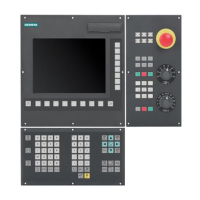S5-95U, SINEC L2 System Description
Each station measures the “real” rotation time and calculates the difference between target rotation
time and “real” rotation time (= token hold time). During this time, a station can transmit: first,
the frames with high priority, then the frames with low priority. When the token hold time is used
up, the station must pass the token to the next station.
Figure 1-4. Distribution of the Target Rotation Time (1)
Station relinquishes the
token
Station receives
the token again
Station relinquishes
the token
Remaining token rotation time
Station transmits all high-
priority and low-priority
message frames
Actual token rotation time used up by the
other stations
Target rotation time
If the transmitter has no token hold time at its disposal (see Figure 1-5), it can only transmit one
frame with high priority before is has to pass the token.
Figure 1-5. Distribution of the Target Rotation Time (2)
Station relinquishes
the token
Station relinquishes
the token
Station receives
the token again
Station
transmits a
high-priority
message frame
Actual token rotation time used up by the other stations
Target rotation time
Broadcasting
Broadcasting is when an active station sends a message frame to all active and passive stations.
Multicasting
Multicasting is when an active station sends a message frame to several active and passive
stations.
EWA 4NEB 812 6112-02
1-7

